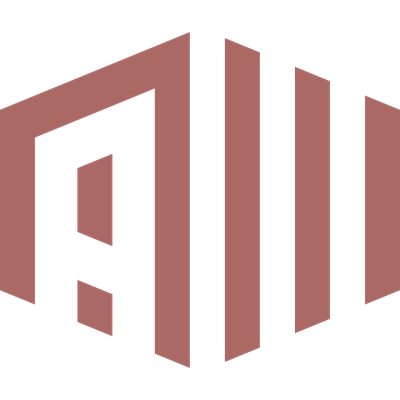We've got 0 anagrams for babalyon »
Any good anagrams for babalyon?
This page list all the various possible anagrams for the word babalyon. Use it for solving word puzzles, scrambles and for writing poetry, lyrics for your song or coming up with rap verses.
- Babylon was the capital city of the ancient Babylonian Empire, which itself is a term referring to either of two separate empires in the Mesopotamian area in antiquity. These two empires achieved regional dominance between the 19th and 15th centuries BC, and again between the 7th and 6th centuries BC. The city, built along both banks of the Euphrates river, had steep embankments to contain the river's seasonal floods. The site of the ancient city lies just south of present-day Baghdad. The earliest known mention of Babylon as a small town appears on a clay tablet from the reign of Shar-Kali-Sharri (2217–2193 BC) of the Akkadian Empire. Babylon was merely a religious and cultural centre at this point and neither an independent state nor a large city; like the rest of Mesopotamia, it was subject to the Akkadian Empire which united all the Akkadian and Sumerian speakers under one rule. After the collapse of the Akkadian Empire, the south Mesopotamian region was dominated by the Gutian people for a few decades before the rise of the Third Dynasty of Ur, which encompassed the whole of Mesopotamia, including the town of Babylon. The town became part of a small independent city-state with the rise of the first Babylonian Empire, now known as the Old Babylonian Empire, in the 19th century BC. The Amorite king Hammurabi founded the short-lived Old Babylonian Empire in the 18th century BC. He built Babylon into a major city and declared himself its king. Southern Mesopotamia became known as Babylonia, and Babylon eclipsed Nippur as the region's holy city. The empire waned under Hammurabi's son Samsu-iluna, and Babylon spent long periods under Assyrian, Kassite and Elamite domination. After the Assyrians had destroyed and then rebuilt it, Babylon became the capital of the short-lived Neo-Babylonian Empire from 609 to 539 BC. The Hanging Gardens of Babylon ranked as one of the Seven Wonders of the Ancient World. After the fall of the Neo-Babylonian Empire, the city came under the rule of the Achaemenid, Seleucid, Parthian, Roman, Sassanid, and Muslim empires. The last known record of habitation of the town dates from the 10th century AD, when it was referred to as the "small village of Babel". It has been estimated that Babylon was the largest city in the world c. 1770 – c. 1670 BC, and again c. 612 – c. 320 BC. It was perhaps the first city to reach a population above 200,000. Estimates for the maximum extent of its area range from 890 to 900 hectares (2,200 acres).The remains of the city are in present-day Hillah, Babil Governorate, Iraq, about 85 kilometres (53 mi) south of Baghdad, and its boundaries have been based on the perimeter of the ancient outer city walls, an area of about 1,054.3 hectares (2,605 acres). They comprise a large tell of broken mud-brick buildings and debris. The main sources of information about Babylon—excavation of the site itself, references in cuneiform texts found elsewhere in Mesopotamia, references in the Bible, descriptions in other classical writing (especially by Herodotus), and second-hand descriptions (citing the work of Ctesias and Berossus)—present an incomplete and sometimes contradictory picture of the ancient city, even at its peak in the sixth century BC. UNESCO inscribed Babylon as a World Heritage Site in 2019. The site receives thousands of visitors each year, almost all of whom are Iraqis. Construction is rapidly increasing, which has caused encroachments on the ruins.
Translation
Find a translation for babalyon in other languages:
Select another language:
- - Select -
- 简体中文 (Chinese - Simplified)
- 繁體中文 (Chinese - Traditional)
- Español (Spanish)
- Esperanto (Esperanto)
- 日本語 (Japanese)
- Português (Portuguese)
- Deutsch (German)
- العربية (Arabic)
- Français (French)
- Русский (Russian)
- ಕನ್ನಡ (Kannada)
- 한국어 (Korean)
- עברית (Hebrew)
- Gaeilge (Irish)
- Українська (Ukrainian)
- اردو (Urdu)
- Magyar (Hungarian)
- मानक हिन्दी (Hindi)
- Indonesia (Indonesian)
- Italiano (Italian)
- தமிழ் (Tamil)
- Türkçe (Turkish)
- తెలుగు (Telugu)
- ภาษาไทย (Thai)
- Tiếng Việt (Vietnamese)
- Čeština (Czech)
- Polski (Polish)
- Bahasa Indonesia (Indonesian)
- Românește (Romanian)
- Nederlands (Dutch)
- Ελληνικά (Greek)
- Latinum (Latin)
- Svenska (Swedish)
- Dansk (Danish)
- Suomi (Finnish)
- فارسی (Persian)
- ייִדיש (Yiddish)
- հայերեն (Armenian)
- Norsk (Norwegian)
- English (English)
Citation
Use the citation below to add this anagrams to your bibliography:
Style:MLAChicagoAPA
"babalyon." Anagrams.net. STANDS4 LLC, 2025. Web. 22 Feb. 2025. <https://www.anagrams.net/babalyon>.






Discuss this babalyon anagram with the community:
Report Comment
We're doing our best to make sure our content is useful, accurate and safe.
If by any chance you spot an inappropriate comment while navigating through our website please use this form to let us know, and we'll take care of it shortly.
Attachment
You need to be logged in to favorite.
Log In